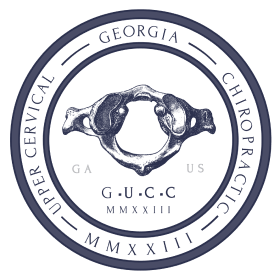Thoracic Outlet Syndrome: Causes, Symptoms & Treatment
Thoracic outlet syndrome (TOS) describes a group of disorders caused by compressed nerves or blood vessels in the thoracic outlet. The thoracic outlet is the space between your collarbone, or clavicle, and your first rib.
How do you know if you have thoracic outlet syndrome ? It can be difficult to know you have thoracic outlet syndrome as symptoms can mimic other conditions like carpal tunnel syndrome. Common first signs include pain in the neck or shoulder muscles and numbness in the fingers.
Once diagnosed, your treatment depends on the type of TOS you’re dealing with and its root cause. The good news is the vast majority of cases respond well to treatment.
TOS Causes
What is the most common cause of thoracic outlet syndrome ? The most common causes of thoracic outlet syndrome are physical trauma and repetitive use injuries.
Common physical trauma includes whiplash injuries from car accidents. Repetitive use injuries from carrying heavy loads or simply performing repetitive tasks with your arms can result in TOS symptoms.
While TOS can affect a patient at any age, women are slightly more at risk for developing symptoms. Competitive athletes are particularly vulnerable.
Sports like volleyball, weightlifting, and swimming all involve repeated movements with the arms overhead, a common cause of not only TOS but repetitive injuries to the arms and shoulders.
Less common causes of TOS include:
- Structural or congenital abnormalities : Patients born with an extra rib, or cervical rib, are at a higher risk of nerve compression in the upper chest. Less than 1 percent of the population is born with a cervical rib.
- Soft tissue variations: Some patients suffer symptoms due to differences in their muscle tissue or ligaments. That includes tightness in the fibrous band or extra tissue causing blockages in the upper chest.
- Poor posture : Sitting with your head and shoulders hunched over or a lack of ergonomic support can cause symptoms of thoracic outlet syndrome over time.
- Tumors: This cause is rare, but growths in the armpit or upper chest can cause compression to the thoracic outlet.
There are 3 main types of the condition: neurogenic , arterial , and venous thoracic outlet syndrome. Each type presents with unique symptoms and treatment plans.
Neurogenic TOS
Neurogenic thoracic outlet syndrome (NTOS) is the most common type of thoracic outlet syndrome. Abnormalities in the bones and tissues around your thoracic outlet or physical trauma to the area can cause NTOS.
The result is compression on your brachial plexus. This network of nerves handles movement and function from the spinal cord to your shoulders, arms, and hands. Any disruptions to that network can cause pain, limited range of motion, and other symptoms associated with NTOS.
Symptoms of NTOS include:
- Weakness or numbness in the hands, arms, and shoulders
- Tingling or a pins and needles sensation in the fingers
- Frequent fatigue in the arms and shoulders
- Atrophy in the hand muscles, especially around the thumb pad
These symptoms often worsen when you lift your arms overhead. This is why many doctors ask you to raise your arms as a simple assessment when they suspect cases of NTOS.
Treatment
Most treatment plans for NTOS include a combination of physical therapy and over-the-counter medications. In more serious pain cases, your doctor may recommend a muscle relaxer to loosen affected muscles.
Chiropractic care can also help alleviate tension in the neck and shoulders and bring any misalignment back into balance.
Surgery for NTOS is rare but may be an option if you don’t respond to a treatment plan. That may mean removing fibrous tissue or a first rib resection. Both allow for thoracic outlet decompression. This essentially gives the upper chest area room to work properly.
Venous TOS
Venous thoracic outlet syndrome (VTOS) is also known as Paget-Schroetter syndrome (PSS) or effort subclavian veinthrombosis. It occurs when one or more subclavian veins — these are the veins underneath the clavicle — are compressed.
This condition often causes blood clots. Complications can quickly become serious and even life-threatening if a clot moves to your lungs and causes a pulmonary embolism.
Symptoms of VTOS include:
- Swelling in the arms, hands, or fingers
- Weakness in the neck, arms, and shoulders
- Discoloration (a blue tint) in the affected hands or arms
- Bulging veins in the shoulders, neck, or hands
In most cases of VTOS, symptoms come on quickly. As this type of TOS can cause blood clots, it’s important to address symptoms immediately.
Treatment
Patients with VTOS may benefit from blood thinning medications or anticoagulation drugs that dissolve blood clots. This includes thrombolysis, a drug therapy that breaks down blood clots before they cause further damage.
In the case of existing blood clots, your doctor may perform an angioplasty to reopen any clogged arteries. Followup surgery may be necessary to permanently widen affected veins and reduce future recurrences of VTOS to those veins.
Arterial TOS
Arterial thoracic outlet syndrome (ATOS) is the least common but most serious type of TOS. It’s caused by congenital abnormalities like the cervical rib. That extra rib compresses the subclavian artery, which can cause an aneurysm if left untreated.
Symptoms of ATOS include:
- Cold hands and fingers
- Discoloration (paleness or a blue tint) in the hands and fingers
- Poor blood circulation
- Pain in the hands and arms
- Weakened pulse in the affected arm
It is important to treat ATOS as soon as symptoms begin. Left untreated, ATOS can leadto an aneurysm and result in internal bleeding or stroke.
Treatment
Treatment for ATOS is typically a combination of blood thinning medications and surgery to remove the first rib. This relieves compression on your nerves caused by crowding in the thoracic outlet from that cervical rib. Followup surgeries may be needed to repair affected arteries.
Diagnosing TOS
TOS is treatable, but the right diagnosis is an important first step for an initial treatment plan. Your health care provider will start with a detailed medical history and physical examination. Based on your symptoms, they may order a series of diagnostic tests to rule out other root causes.
Diagnostic tools may include:
- Imaging scans: X-rays, MRIs, and CT scans may show structural abnormalities or other defects. Physicians use ultrasounds and arteriography, or angiograms, to monitor blood flow through the thoracic outlet.
- Venograms: Venograms offer doctors a closer look at how your veins and vascular system are working. They’re often used when a physician suspects VTOS and after procedures to address complications, like an angioplasty.
- Stress and balance tests: Your physician may walk you through a series of exercises and maneuvers to look for weakness in the arms and shoulders as part of a physical exam. Raising your arms overhead is a simple, common way to test for TOS.
- Electromyography (EMG): Nerve conduction studies monitor how your muscles react to electrical stimuli. Similarly, they measure how quickly you feel electrical prompts to the nerves. These are one of the more sensitive tests for NTOS.
Risk Factors
We’ve already mentioned that TOS can affect anyone, with women at a slightly higher risk than men for developing NTOS, the most common type.
Additional risk factors include sedentary work at a desk with improper ergonomic supports and competitive sports that include repetitive overhead arm movements.
Bodybuilders who build muscles up in affected areas too much are also at risk. The remedy there is reducing muscle mass around the neck.
If left untreated, TOS can become serious over time. Complications include:
- Limited range of motion
- Muscle atrophy
- Permanent neurological damage
- Permanent swelling and pain in the affected side
- Ulcers and sores on the hands and fingers
- Acute thrombosis
- Pulmonary embolism
The good news is, TOS is treatable and outcomes are good when you catch and address symptoms early.
Preventing TOS
How does thoracic outlet syndrome affect your everyday life? Thoracic outlet syndrome can limit your daily activities and cause chronic pain. In some patients, TOS can lead to serious complications.
Unless you’re the rare case with a structural or congenital defect behind your TOS symptoms, there are ways to reduce your chances of developing TOS or keep it from coming back. Much like vertigo , TOS can be a recurring problem.
Use these preventive measures to improve your chances:
- Know your triggers. If you already have TOS, you probably have an idea how you got there. Avoid repeat scenarios. That can be as simple as calling for help when lifting heavy objects overhead. Avoid carrying much weight on the affected shoulder.
- Consider your workspace. Does your work area follow ergonomic principles? Are you able to stand, stretch, and move around from time to time? Practice good posture whether you’re sitting or standing throughout the day.
- Protect yourself. If you’re a competitive athlete, wear the appropriate gear. Incorporate strength training and a variety of movements into your regular routine to avoid repetitive use injuries.
- Maintain a healthy lifestyle. If you’re overweight, dropping a few pounds may alleviate pressure on your joints and improve your mobility. Carrying extra weight may also affect the outcomes of any treatment plan for TOS.
What to Do if You Have TOS
TOS is treatable. Depending on the type, lifestyle changes can go a long way toward improving your symptoms. That includes maintaining a healthy weight and introducing gentle exercises that target affected muscles.
Can exercise help thoracic outlet syndrome ? Targeted exercise can help thoracic outlet syndrome. Focus on exercises or physical therapy techniques that work to strengthen the muscles around your neck and shoulders.
Simple exercises may include:
- Shoulder rolls
- Shoulder stretches
- Neck stretches
- Shoulder blade squeezes
- Scalene muscles stretch
Any exercises or balance work that improve your posture overall are also positive for long-term management of TOS symptoms. If any of these new movements are causing you pain, take a break immediately and consult your doctor. Listen to your body.
What’s the best sleeping position for thoracic outlet syndrome ? The best sleeping position for thoracic outlet syndrome is on your back. If you’re a side-sleeper, avoid sleeping on the affected arm or side. Try using a pillow to keep your shoulders from rounding.
A good sleep schedule may also reduce your overall stress, a known trigger for conditions like TOS.
In many cases, your doctor will recommend over-the-counter medications for managing chronic pain. Patients with VTOS may benefit from blood thinning medications or anticoagulation drugs that dissolve blood clots.
In serious TOS cases or in patients where other strategies haven’t worked, surgical treatments may be recommended. Vascular surgery may involve a first rib resection to reduce compression, excess tissue removals, and blood vessel reconstruction.
Keep in mind that TOS can be a recurring condition, even after surgery. Surgical options should be a last resort.
How Chiropractic Care Can Help
Chiropractic care is a good way to address compression due to poor posture or misalignment in the cervical and thoracic spine, as well as first and second ribs.. Gentle manipulations and adjustments from an experienced chiropractor and soft tissue therapy can help relieve that pressure and tension.
The result is often reduced pain as you begin to treat the root cause of your TOS. You may even find that regular chiropractic care strengthens the affected muscles over time. Your chiropractor can also work with you on practicing at-home exercises safely.
If you’re suffering from TOS and want to bring balance back into your life, Georgia Upper Cervical Chiropractic can help. We help restore mobility affected by TOS and show you how to facilitate the recovery process moving forward.
Ready to get to the root of your problem with chiropractic care? We’re currently accepting new patients at our Ball Ground office.
Sources
- Jones, M. R., Prabhakar, A., Viswanath, O., Urits, I., Green, J. B., Kendrick, J. B., Brunk, A. J., Eng, M. R., Orhurhu, V., Cornett, E. M., & Kaye, A. D. (2019). Thoracic Outlet Syndrome: A Comprehensive Review of Pathophysiology, Diagnosis, and Treatment. Pain and therapy, 8(1), 5-18. Full text: https://www.ncbi.nlm.nih.gov/pmc/articles/PMC6514035/
- Ohman, J. W., & Thompson, R. W. (2020). Thoracic Outlet Syndrome in the Overhead Athlete: Diagnosis and Treatment Recommendations. Current reviews in musculoskeletal medicine, 13(4), 457-471. Full text: https://www.ncbi.nlm.nih.gov/pmc/articles/PMC7340704/
- Fliegel BE, Menezes RG. Anatomy, Thorax, Cervical Rib. [Updated 2021 Jul 26]. In: StatPearls [Internet]. Treasure Island (FL): StatPearls Publishing; 2022 Jan-. Full text: https://www.ncbi.nlm.nih.gov/books/NBK541001/
- Kuwayama, D. P., Lund, J. R., Brantigan, C. O., & Glebova, N. O. (2017). Choosing Surgery for Neurogenic TOS: The Roles of Physical Exam, Physical Therapy, and Imaging. Diagnostics (Basel, Switzerland), 7(2), 37. Full text: https://www.ncbi.nlm.nih.gov/pmc/articles/PMC5489957/
- Saleem T, Baril DT. Paget Schroetter Syndrome. [Updated 2022 Jan 11]. In: StatPearls [Internet]. Treasure Island (FL): StatPearls Publishing; 2022 Jan-. Full text: https://www.ncbi.nlm.nih.gov/books/NBK482416/
- Archie, M., & Rigberg, D. (2017). Vascular TOS-Creating a Protocol and Sticking to It. Diagnostics (Basel, Switzerland), 7(2), 34. Full text: https://www.ncbi.nlm.nih.gov/pmc/articles/PMC5489954/
- Cruz-Martínez A, Arpa J. Electrophysiological assessment in neurogenic thoracic outlet syndrome. Electromyogr Clin Neurophysiol. 2001 Jun;41(4):253-6. PMID: 11441643. Abstract: https://pubmed.ncbi.nlm.nih.gov/11441643/


Ready to Make an Appointment?
We serve patients in Ball Ground, GA.

